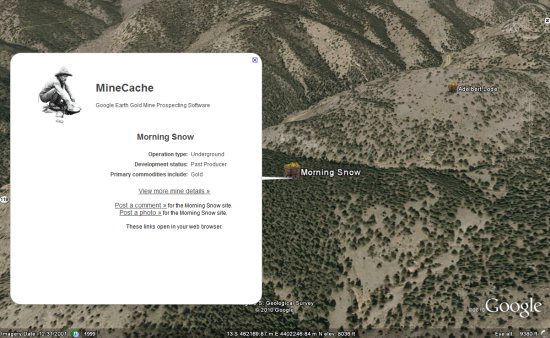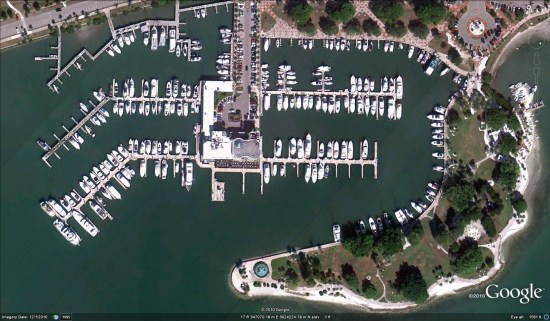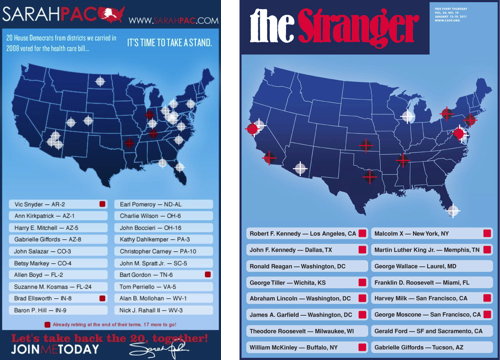Last year, we showed you a feature from Gold Maps Online that helped you find areas that were currently being mined. It had some interesting and potentially useful maps, though they charge for access.
Now we’ve been introduced to a company called MineCache. MineCache takes the raw data from the USGS MRDS (United States Geological Survey, Mineral Resource Data System), cleans out the non-applicable items (other minerals, etc), and then presents it in the form of a very nice network link.

The site typically requires that a user register for an account before they can use the files, so that users can post photos and comments. However, for those of you simply wanting to poke around and play with it, they’ve created a special KML file![]() to let you try it out.
to let you try it out.
The only problem I had is that I didn’t know where to look. I’d zoom around and it would always say “No gold mines here”. I suppose this wouldn’t be a problem for people that are genuinely needing a tool like this, but it was a bit frustrating for me. If you have the same problem, just fly to this KML file![]() with their network link active and you should see a few.
with their network link active and you should see a few.
If you’re the kind of user that is interested in this type of tool, do you find this more useful than the “Gold Maps Online” we showcased before? Why or why not?

